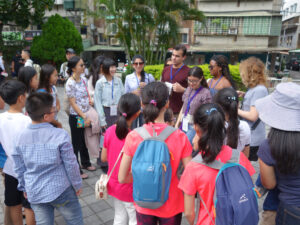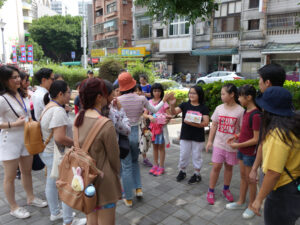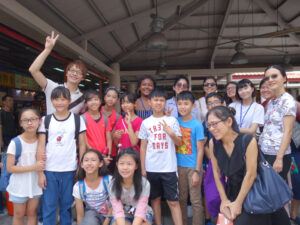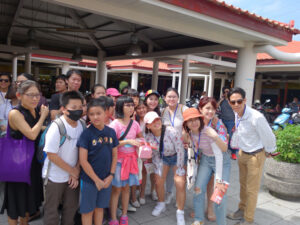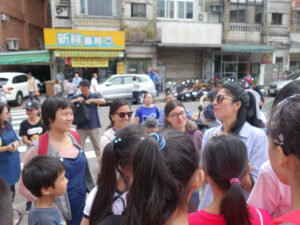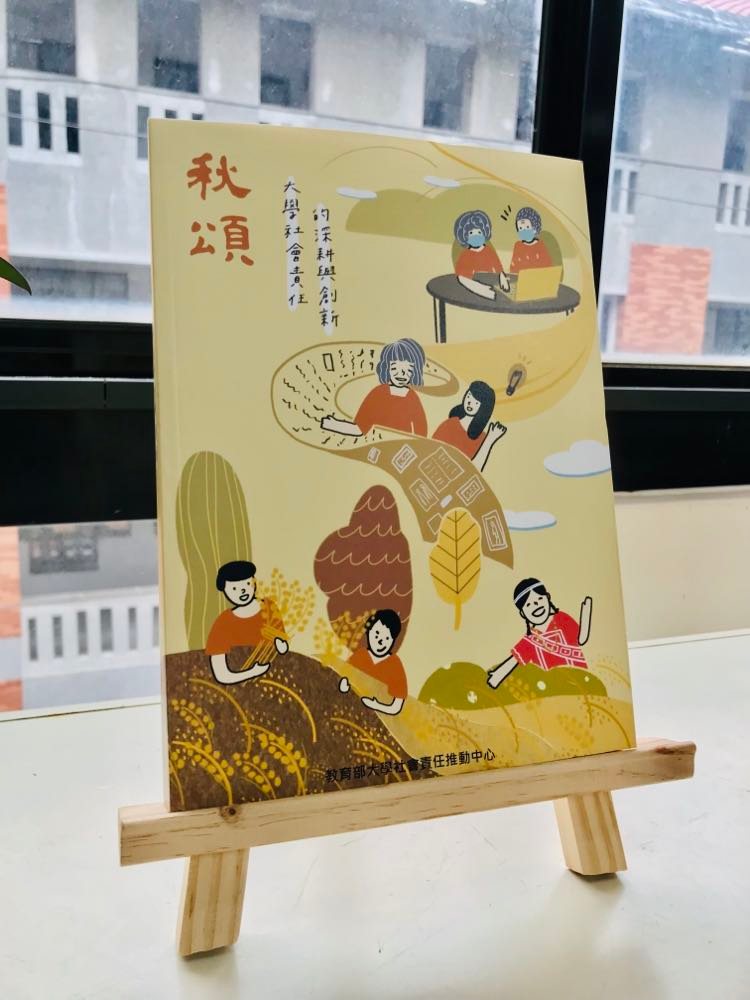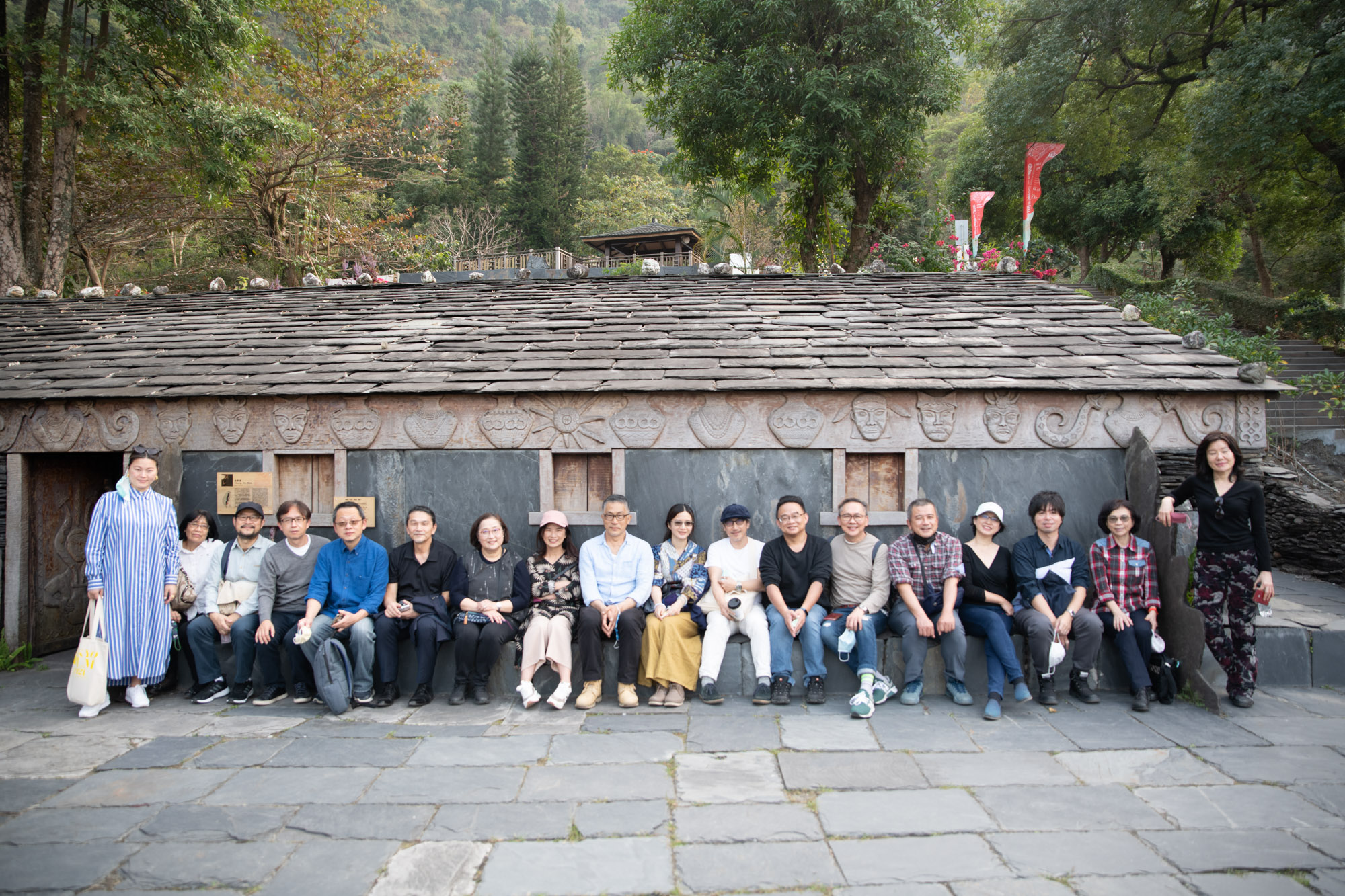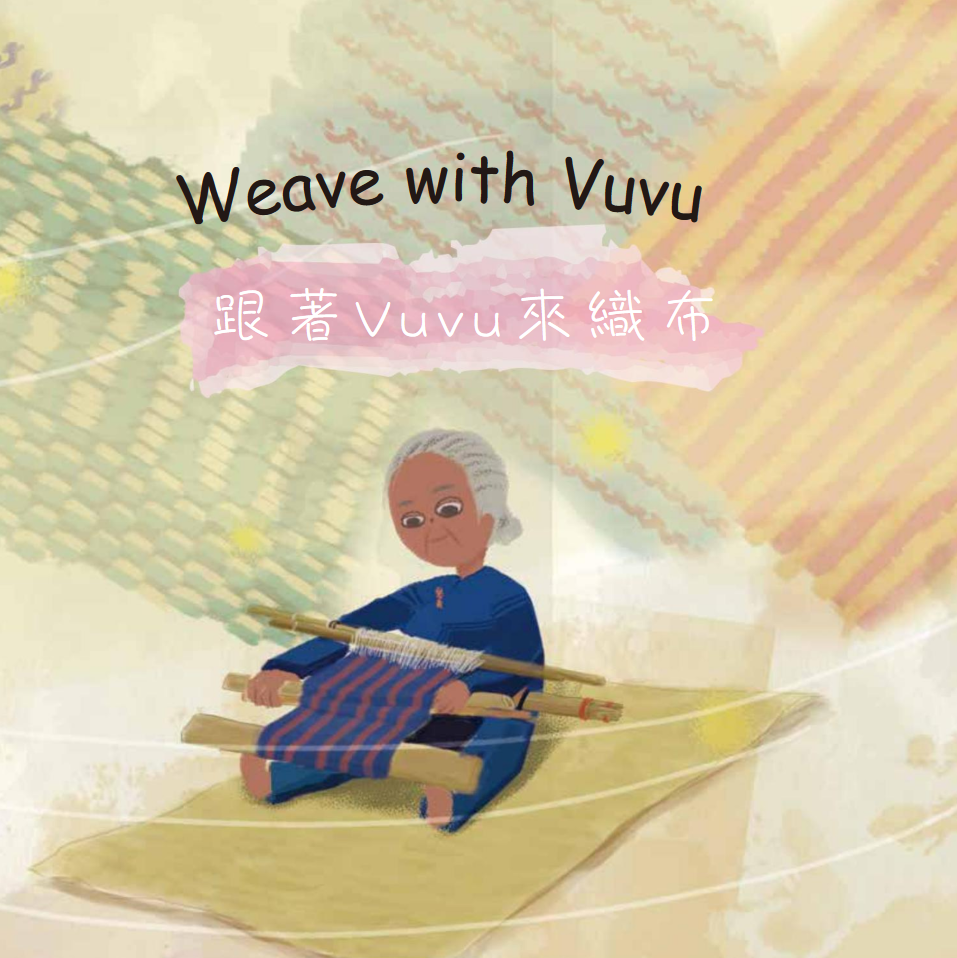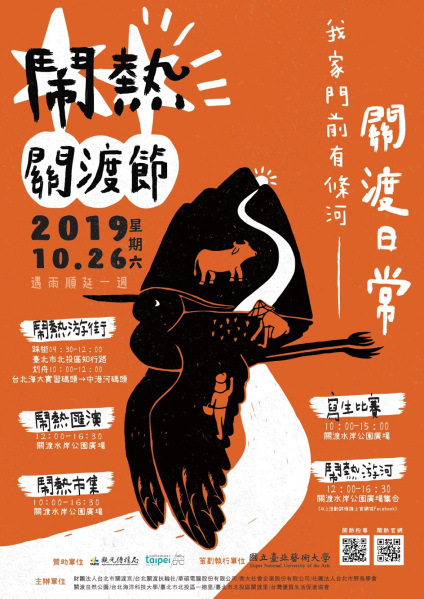
鬧熱關渡節-沉浸式文化體驗
2019 USR計畫活動– IMCCI & 北投國小跨文化分享
這學期的第一場文化交流USR活動發生在關渡,一個具有教育性的早晨。2019鬧熱關渡節提供不同文化背景的學生們寶貴的學習經驗。10/26星期六,22位北投國小的五年級生和父母、老師受到邀請,和IMCCI學生一起觀賞第5屆鬧熱關渡節遊行隊伍。這場遊行是鬧熱關渡節其中一場活動,由台北藝術大學跟市議會合作。出於團結與包容的目標,北藝大在這場一年一度的活動用藝術作為參與社區的媒介。
IMCCI學生和北投的小學生會參加今天的活動,有好幾個原因。今天對國際學生而言不僅是參與關渡社區與文化的機會,也讓他們可以跟小學生、他們的父母分享自己的文化、體驗差異。
今年的鬧熱關渡社區節超過40組當地團體參與,包含學校、公司和社區代表團體。這場藝術節只有一天,是關渡節的一部分活動。關渡節規模較大,有超過兩個月的藝術展覽、表演和學校不同系所舉辦的工作坊。這場藝術節由3大活動組成社群認同:農夫市集、遊行跟舞台展演。多位社區成員參與分享,加入音樂、舞蹈、戲服等藝術元素向觀眾傳達訊息。
週六早上10點,IMCCI學生在知行公園與北投國小學生相見歡。開場介紹後,我們分成兩組,前往遊行隊伍經過的街道。
今天這個場合讓IMCCI新生更了解這個新社區的文化、歷史,透過舞蹈、音樂、戲服和表演更了解當地歷史。遊行中鮮豔的色彩和動感的角色獨特地傳達傳統、當代文化和價值。
對多數國際新生而言,當地文化的快照激發他們對台灣多樣性的疑問,尤其是對他們現在生活的社區,有了更多好奇。
根據藝術節的歷史,鬧熱關渡節旨在頌揚關渡地區的多樣性。自然溼地、候鳥和漁港組成豐富的生態多樣性,也是新店溪、基隆河、大漢溪的匯集點。參與者展現的主題是構成這社區的迥異生態系統。有些人身上穿的服裝以及他們表演時的肢體動作呈現這些多樣性,也有些人著重在文化族群身分、信仰和流行文化。
這場沉浸式體驗讓我們對課堂中關於台灣身分、歷史、信仰的理論有更深刻的了解。健康、繁榮、榮譽的傳統再現和其他亞洲種族文化、拉丁美洲音樂,甚至如扶輪社的國際組織交織在一起。
IMCCI學生和北投國小學生在這場沉浸式體驗中的交流過程中,出現許多對比和不同的詮釋。國小生有機會練習英文,了解IMCCI學生所來自國家的地理位置。他們也有平台可以分享自己的理解,還有遊行表達的意涵;這些資訊讓IMCCI學生更加了解當地人的觀點。
學生們接下來的角色從觀眾變成參與者,一起參與遊行,就像關渡社區的新成員。這趟短短的路程讓學生反思在社區中所親眼看到的事物。
水岸公園廣場是遊行的終點,這是個開放的空間,可舉辦市集和戶外表演。市集中都是社區組織的攤位,還有來自學校的代表攤位,包含宣傳推廣、音樂表演和嘗試不同樂器的機會。遊行中的一些隊伍下午在舞台上有現場表演,還有戲劇、舞蹈和音樂劇演出。
– written by Melody Wagner
English Version
An educational morning of cultural exchange in the Guandu area was the activity for this semesters first USR project. The 2019 Fun Kuandu festival was the platform for an invaluable experiential learning experience for the group of diverse students. On Saturday October 26th, 22 Fifth Grade Students from the Beitou Primary School along with their parents and a few teachers were invited to watch the 5th annual Fun Kuandu Festival Parade along with junior and senior students of the IMCCI Program. The parade, one of the activities in the Fun Kuandu Festival, is an initiative coming out of a collaboration between Taipei National University of the Arts and the City Council. With an overarching purpose of unity and inclusion, the annual event is a way for the University to engage with its community through art.
Participating in the day’s activity served several purposes for both IMCCI Students and the Primary School students from Beitou alike. Not only was it an opportunity for the predominantly international university students to engage with the Guandu community and their culture but it also provided an opportunity for the students to engage with each other by sharing their cultural identities with the students from the elementary school as well as their parents. It was an informal forum for cultural exchange and exposure to difference.
This year’s Fun Kuandu Community Art Festival or Hot Festival featured over 40 local groups including schools, businesses and representatives of other community groupings. The one day festival is a part of the larger Guandu festival activity which includes over two months of artistic displays, performances and workshops held different departments in the school showcasing both students and international invited guests. The shared community identity could be demonstrated through the 3 main activities that make up the festival: a farmers market, the parade and the stage presentations. Large numbers of community members were present to participate in the sharing, utilizing artistic elements of music, dance and costumes to present their messages to their audience.
Saturday morning at 10 o’clock IMCCI students met the Beitou Primary School students in the Zhixing Park. After completing initial introductions, the group separated into two and went closer to the street that the parade would pass.
The day was an occasion for the newest cohort of IMCCI students to get a better understanding of the diverse culture, history and ideas that exists within their new community. It was a unique opportunity to engage with its history through dance, music, costumes and performance among other innovative activities. The vibrant colors and dynamic characters in the parade unique messages about traditional and contemporary culture and values.
For the cohort of mostly International students, the snapshot of local culture inspires new questions about the diversity at play in Taiwan and specifically the community that they now live.
As the history of the festival explains, Fun Kuandu Festival celebrates the diversity in the terrain of the Guandu area. Which is known for its rich ecological diversity comprising of natural wetlands, migratory birds, fishing ports and docks due to its location, which is the merging point of the Xindian, Keelung and Dahan rivers. Themes presented in the participant’s displays were characterizations of the divergent environmental ecosystems that make up the community. Costumes worn by some of the participating schools and other community groups represented these diversities and so did their body movement in performances. While other presentations focused on ethnic cultural identities, spiritual beliefs and pop culture.
This immersive experience allowed for a greater understanding of concepts being theoretically visited in the classroom relating to Taiwanese identity, history, and belief systems. Group presentation and representations included traditional symbols of health, prosperity and honor among other beliefs interwoven with the identities of other Asian ethnicities Cultures, Latin American Music and even international organizations such as the Rotary Club.
As it relates to the exchange shared between the primary school students and the IMCCI cohort, their presence during this immersive experience allowed for a level of comparison and alternative interpretation to be done. The Primary School students had the chance to practice speaking English and learn about the geographical locations of the countries which student’s in the IMCCI come from. They also had the additional benefit of a platform to share their understanding, and ideas of what the parade demonstrated, which provided the IMCCI students with a local and alternative perspective of what they witnessed.
After spending some time engaging with the presentations, the groups moved from spectators to participants and joined in the parade as new members of the Guandu Community. The short walk/ march to the culminating point of the parade was a moment to reflect on what had been witnessed in the community.
At the Shui’an Park Plaza the parade ends in a shared open space that is transformed for the dual purposes of a market space and a stage area. The market had display booths set up by community organizations and representatives from the school. Displays included promotional material and engaging activities, musical performances and the opportunity to try out different instruments. In the stage live performances were done for the remainder of the afternoon by some of the groups that were in the parade, presentations ranged from dramatizations to dance and musical pieces.
– written by Melody Wagner





